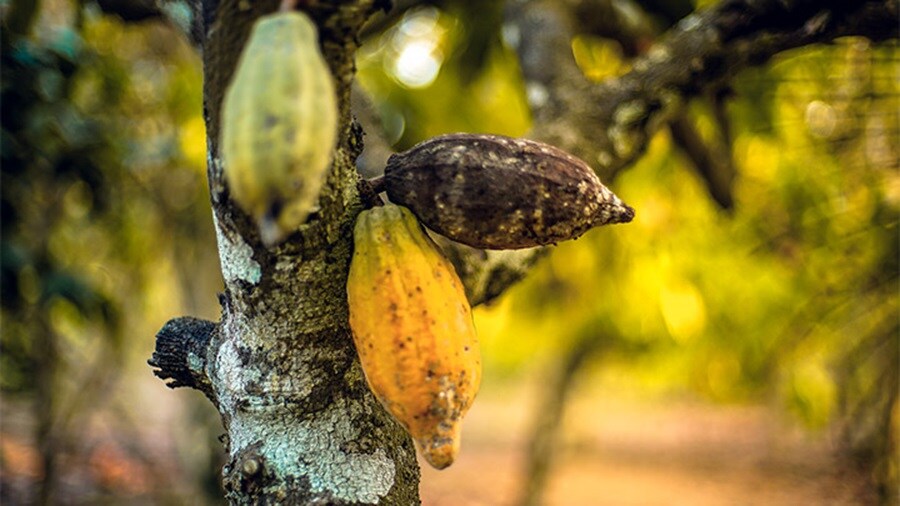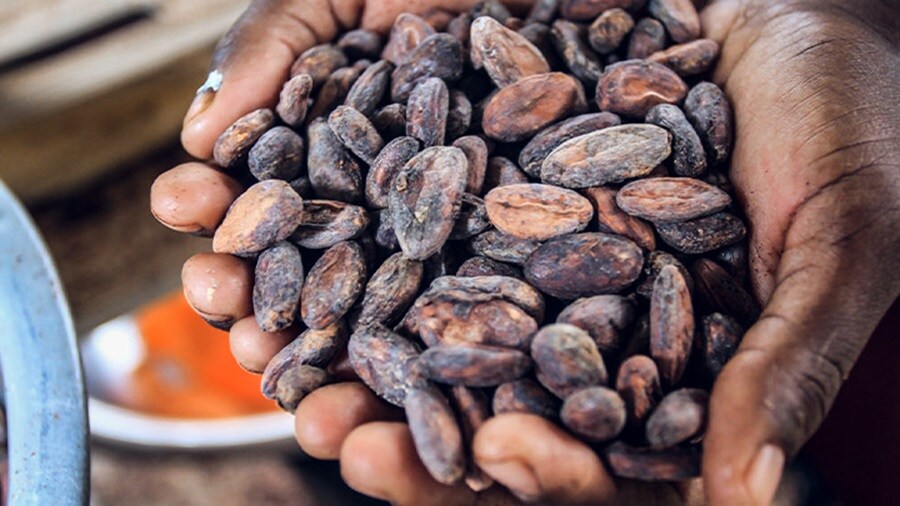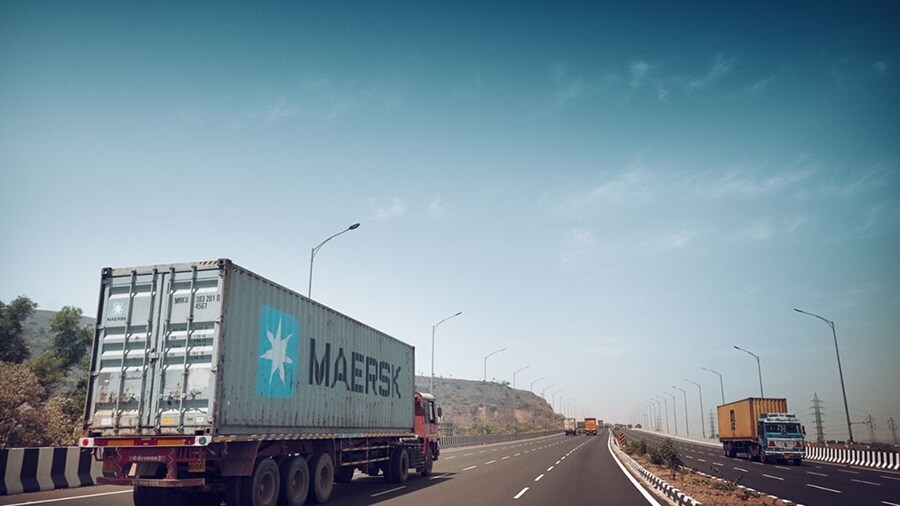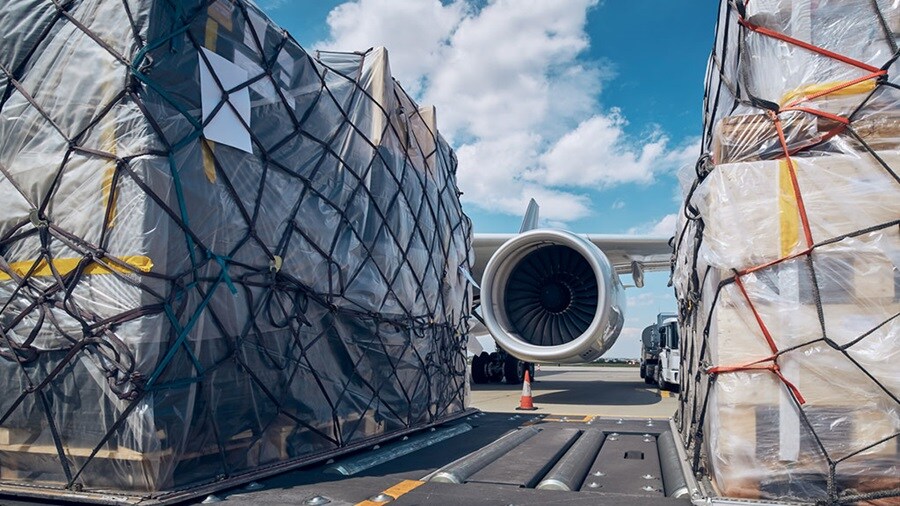As part of our commitment to provide you with the most up-to-date and relevant information on the logistics industry, we share our Market Update on the Latin American market.
You will find information and interesting data on the update of the state of the ports, the most important transport routes and relevant news.
We hope you'll find the following information helpful, as well as inspiring to boost your business and keep your cargo moving.
Topic of the Month: Cracking the Easter code: Challenges and opportunities for Latin American cocoa chocolate logistics
Easter is a time of joy and celebration, and in Latin America, it holds significant cultural and religious importance. This festive season brings unique challenges and opportunities for the chocolate industry, particularly in terms of logistics. As we dive into the intricacies of Easter chocolate logistics in Latin America, we will explore the origins of chocolate in the region, the celebration of local heritage, the rising prominence of Latin America in global cocoa production, and the logistical marathon from cocoa farms to candy aisles. Additionally, we will highlight the importance of precise inventory planning and strategic collaboration to ensure a successful Easter clearance.
Chocolate, often associated with European craftsmanship or African cocoa production, has its true origins in Latin America. Ancient Mesoamerican civilizations, such as the Maya and Aztecs, cultivated cocoa and revered it as the "food of the gods," laying the foundation for the rich chocolate heritage that continues to thrive in the region today. These cultures used cocoa in various forms, from ceremonial drinks to offerings to their deities, and it was often used as currency and considered a symbol of wealth and status.
Today, Latin America, despite producing 20% of the world's cocoa, boasts the greatest genetic diversity of cocoa plants. This diversity unlocks bold flavors and resilient varieties that are quietly reshaping the future of chocolate.
Every Easter, millions of chocolate eggs find their way into eager hands, whether tucked into baskets, hidden in garden hunts, or unwrapped with joy. While many associate chocolates with European artistry or African cocoa production, their true origins lie in Latin America. Local chocolate makers celebrate this heritage by creating unique Easter treats that reflect the region's distinct flavors, such as maracuja, dulce de leche, and chili-spiced chocolates. These creations are winning hearts globally and showcasing the region's innovative approach to chocolate making. The cultural and genetic richness of Latin American cocoa continues to influence the global chocolate industry, making the region a powerhouse in cocoa production and chocolate innovation.
Latin America: A rising powerhouse in cocoa production

As global cocoa dynamics shift, Latin America is emerging as a key player in the industry. While Côte d'Ivoire and Ghana - the world's leading cocoa producers - work to overcome challenges from aging trees and shifting climate conditions, Latin America's cocoa industry is experiencing rapid growth. Countries like Venezuela, Ecuador, Peru, and Colombia now produce 80% of the world's premium cocoa. Their advantage? Younger trees, strategic investments, and ideal growing conditions.
Brazil has emerged as a particular standout, ranking third globally in Easter chocolate innovations.
The market is evolving with trends such as nut- and fruit-infused chocolates, particularly featuring pecans, as well as the rise of digitalization, where QR codes on packaging offer interactive experiences. Personalization is also gaining traction, allowing consumers to customize flavor combinations. With 83% of Brazilians planning to celebrate Easter in 2025 (up from 68% in 2024), the domestic market shows remarkable growth potential. Valued at USD 26.70 billion in 2024, the global cocoa market is projected to reach USD 42.26 billion by 2034, growing at a 4.70% CAGR. This rising tide is positioning Latin America at the heart of the global chocolate supply chain.
From Cocoa Farms to Candy Aisles: A Supply Chain Marathon
Easter egg production in Latin America is highly seasonal, creating a surge in demand that peaks within a few weeks. This seasonal spike presents unique logistical challenges for the chocolate industry. Ensuring timely delivery and maintaining optimal conditions for these products is crucial. The journey from cocoa farms to candy aisles involves multiple stages, including production, transportation, warehousing, and distribution. Each stage requires meticulous planning and coordination to meet the high demand during Easter.
Efficient logistics play a critical role in ensuring that chocolates reach consumers in perfect condition. This involves not only managing the transportation and storage of cocoa and chocolate products but also anticipating and addressing potential disruptions in the supply chain.

By collaborating with logistics partners who understand their goals and can anticipate changes in demand, companies can navigate the complexities of Easter chocolate logistics and ensure a successful Easter clearance.
Striking the right balance is crucial - too much inventory leads to post-Easter markdowns, too little leaves customers disappointed. With the region’s booming e-commerce sector and a surge in foot traffic during one of the biggest holidays, retailers must fine-tune inventory management to avoid stockouts, minimize waste, and maximize profitability.
Striking the right balance is crucial - too much inventory leads to post-Easter markdowns, too little leaves customers disappointed. With the region’s booming e-commerce sector and a surge in foot traffic during one of the biggest holidays, retailers must fine-tune inventory management to avoid stockouts, minimise waste, and maximise profitability.
Predictive analytics, machine learning, and artificial intelligence can help companies plan for contingencies such as delayed raw materials, stockouts, and supply chain disruptions. By utilizing these technologies, businesses can develop alternative scenarios to minimize the effects of disruptions and ensure a smooth flow of goods during peak seasons.
The Great Easter Clearance: Why Smart Planning Matters
Once Easter Sunday passes, the demand for chocolate eggs drops as fast as it surges. If inventory planning isn’t precise, chocolatiers and retailers can end up with an overstock problem, leading to deep discounts that eat up profits as products approach their expiration dates. Beyond financial losses, warehouse space becomes critical as surplus Easter inventory delays the transition to the next seasonal opportunity, creating a ripple effect through the supply chain.
But even the best forecasts can’t predict everything. That is where true collaboration with supply chain partners becomes essential.
To truly turn seasonal challenges into opportunities, businesses need an end-to-end supply chain provider that understands their goals, anticipates demand shifts, and collaborates as a true strategic partner. With the right logistics partner, chocolatiers can move from reactive problem-solving to proactive planning, ensuring that every Easter rush is executed seamlessly, making it truly a sweet success.

To navigate the complexities of seasonal logistics, companies must collaborate with logistics partners who understand their goals and can anticipate changes in demand. This strategic collaboration is essential for mitigating supply chain risks and ensuring that seasonal goods, such as Easter chocolates, reach consumers in perfect condition. By working closely with logistics partners, businesses can move from reactive problem-solving to proactive planning, addressing potential disruptions before they occur and maintaining optimal inventory levels. This approach not only minimizes waste and stockouts but also maximizes profitability during peak seasons.
Furthermore, strategic collaboration transforms seasonal challenges into opportunities. With the right logistics partner, chocolatiers and retailers can fine-tune their inventory management, ensuring a seamless transition from one seasonal opportunity to the next. This proactive planning helps avoid the financial losses associated with post-Easter markdowns and the critical warehouse space issues caused by surplus inventory. Ultimately, by fostering strong partnerships with logistics providers, companies can ensure that every Easter rush is executed seamlessly, making it truly a sweet success.
Ocean Updates

| Trade lane | Comments |
|---|---|
|
Trade lane
West Coast to Intra-Americas
|
Comments
In week 10, our Peru Feeder service ceased its calls to Pisco as planned due to the slowdown in the reefer season. The service will begin calling Buenaventura, Colombia, during March and April 2025 to support the additional flows coming from Colombia to the West Coast of South America.
|
|
Trade lane
North America to Intra-Americas
|
Comments
Savannah calls have resumed on the South Atlantic Express (SAE) and North Atlantic Express services, making these services now open for bookings to/from Savannah. The local situation in Haiti has improved, and we are now open for bookings for dry cargo. Our new America Shuttle 1 (AM1), offering direct service from Cartagena, Colombia, to Miami, FL, and Jacksonville, FL, will be launched on March 18th, 2025. The dedicated weekly vessels on America Shuttle 1 will depart Cartagena, Colombia, on Tuesdays and arrive in Miami, FL, on Saturdays and Jacksonville, FL, on Mondays. Similarly, our America Shuttle 2, offering direct service from Cartagena to Tampa, and New Orleans, launched on March 19th, 2025. eekly sailings depart Cartagena, Colombia on Wednesdays with arrival in Tampa, on Mondays and New Orleans, on Wednesdays. |
|
Trade lane
West Coast to North America
|
Comments
Our Atacama service is now adding a Northbound (NB) call in San Antonio, Chile, as part of the seasonal reefer peak in the region. This addition is primarily aimed at transporting reefer cargo from Chile to the U.S. West Coast, calling at Port Hueneme or Long Beach with an improved transit time of four days.
|
|
Trade lane
North America and Intra-America to East Coast of South America
|
Comments
We are enhancing our service from Norfolk. As of March 26, cargo will now load on the TP-12 via Cartagena. Similarly, starting in April, cargo departing from Mobile will benefit from an improved transit time on the TP-15, also via Colombia. The Tango service will continue omitting Norfolk until the third quarter of 2025. The New Brasex service has resumed calls to El Salvador as of mid-March. Meanwhile, the Gulfex service will continue alternating calls between Altamira and Veracruz, Mexico. |
|
Trade lane
Intra-America to Caribbean
|
Comments
The local situation in Haiti has improved, and we are now open for bookings for dry cargo.
|
|
Trade lane
East Coast of South America to Intra-Americas
|
Comments
Tango service has extended its Norfolk suspension until the third quarter 2025 with cargo being attended via barge from Philadelphia. Brazex has resumed weekly calls to El Salvador since mid-March New service will connect Los Angeles and Tampa starting in April via the UCLA service, with transshipment at Cartagena, Colombia. |

Landside updates
Central America, Andina and the Caribbean Sea Area
The congestion in Central America, which began in mid-2024, has led to cargo congestion at terminals and internal depots. This has resulted in increased waiting times and significantly reduced the turnover of truck fleets in Guatemala, Honduras, El Salvador, and Nicaragua. To mitigate the impact of these congestions and infrastructural bottlenecks, more rigorous planning is essential.

Air updates
Central America, Andina and the Caribbean Sea Area
Central America and the Caribbean: strong imports on e-commerce and consumer goods, although air capacity remains limited. With the high tourism season approaching, airports, especially in the Caribbean, are expected to experience congestion.
Panama: Panama remains a key hub with strong export activity for electronics, automotive parts, and perishable goods. While import and connection are strong, routes to the U.S. and Europe are expected to face restrictions during demand peaks.
Colombia: Air cargo demand remains high due to agricultural exports, primarily flowers and fresh produce.
West Coast South America
The new terminal at Lima Airport, Peru, is scheduled to begin operations on March 30. Located several kilometers from the current terminal, it features a redesigned layout aimed at improving efficiency and eliminating wait times. While the increased distance between airline warehouses, cooler facilities, and the new aircraft parking areas may affect air cargo transfer times, the enhanced layout is expected to optimize overall operations. The situation will be closely monitored after the launch to assess the final transfer times.

Highlights
International trade in Latin America
Looking to do business in Latin America? We do more than carry cargo. We support your supply chain from end to end to advance your ambitions and connect your company to new markets and customers.
Learn more from the global Maersk team
Learn what’s happening in our regions by reading our Market Updates by region.
Europe
North America
Asia Pacific
Be sure to visit our “Insights” pages where we explore the latest trends in supply chain digitization, sustainability, growth, resilience, and integrated logistics.
Anything you need, we’re here to help
I agree to receive logistics related news and marketing updates by email, phone, messaging services (e.g. WhatsApp) and other digital platforms, including but not limited to social media (e.g., LinkedIn) from A. P. Moller-Maersk and its affiliated companies (see latest company overview). I understand that I can opt out of such Maersk communications at any time by clicking the unsubscribe link. To see how we use your personal data, please read our Privacy Notification.
By completing this form, you confirm that you agree to the use of your personal data by Maersk as described in our Privacy Notification.
